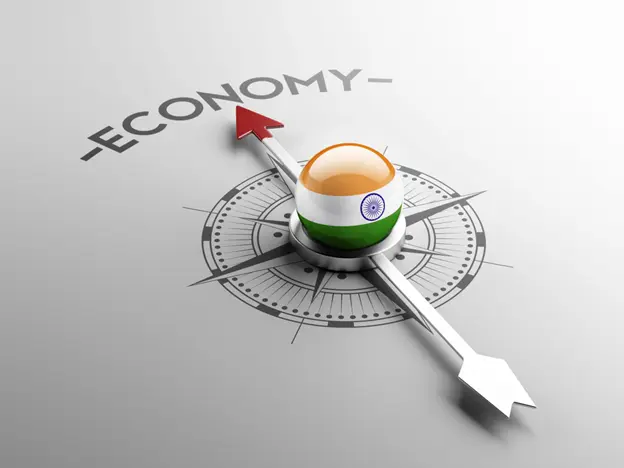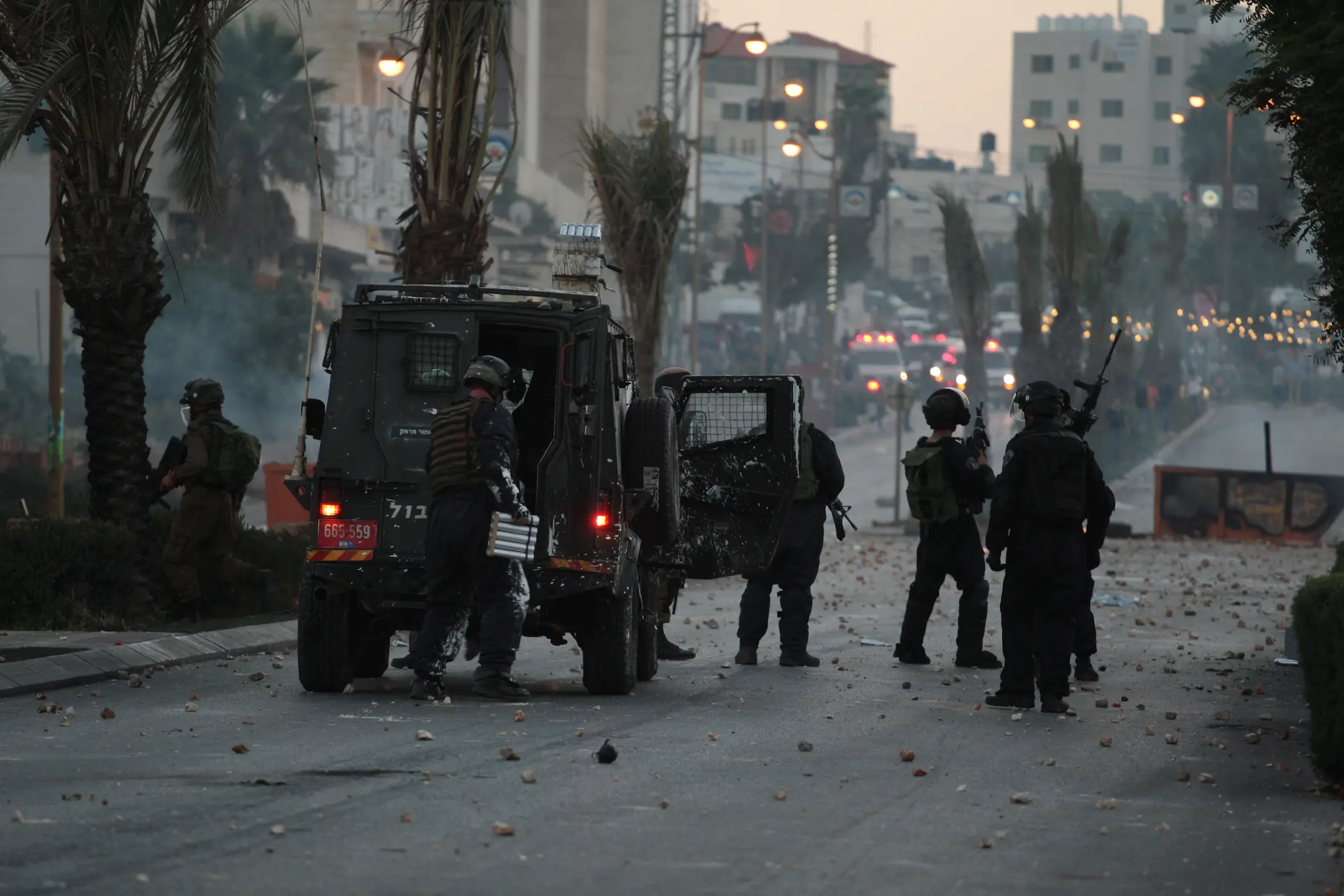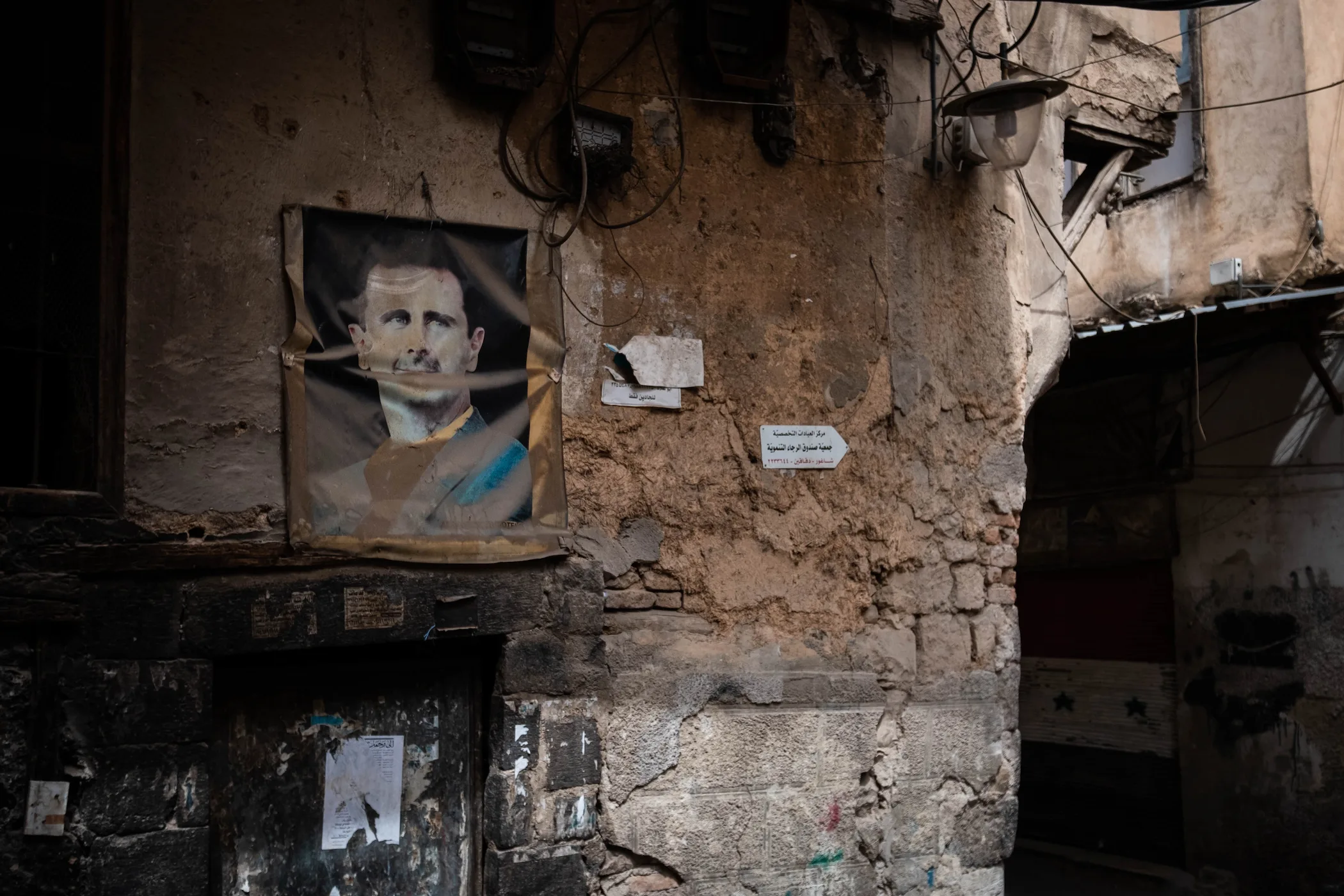Indian legislative elections were held on April 14, 2024, to choose a new parliament to represent the country for the next five years. These elections are considered the largest and longest in the world, given the vast geographical area of India, as voting will be held in seven phases across different states over a period of approximately six weeks. About 969 million voters will participate in these elections to choose 543 members of the lower house of the Indian Parliament (Lok Sabha). These elections are of great importance and are among the most expensive in the world, with their cost expected to reach be nearly double what was spent in the 2019 elections.
An opinion poll conducted by the Centre for Research and Studies of Developing Countries indicates that the ruling Bharatiya Janata Party (BJP) is likely to win the 2024 Indian parliamentary elections, paving the way for a third term for Prime Minister Narendra Modi. The Lok Sabha elections are being held in a negative atmosphere, with opposition allegations of unequal playing field, as a result of the intervention of federal law enforcement agencies who have attacked several political leaders and froze their bank accounts for six weeks. This means that the elections will have political and economic repercussions if Modi wins a third term, which will in turn impact India’s internal situation.
The Political Repercussions of a Third Term
Indian Democracy is at a Crossroads
The Indian opposition fears that Modi’s third term will bring more dictatorship and democratic decline in implementation of the path that Modi has projected since he took power in India in 2014, and the Hindu nationalist policies pursued by Modi and his party are widely seen as having reshaped the country’s political and cultural landscape. Over the past decade, it has shifted away from the secularism enshrined in the Constitution — which guarantees equality for all religions — and toward Hinduism and majority rule.
Critics of the ruling People’s Party believe that another term led by Modi could undermine India’s status as a secular, democratic state, as they claim that his 10 years in power led to growing Hindu nationalist hostility against minorities in the country especially Muslims, and it also contributed to reducing the space for political opposition and freedom of media.
At the top of these criticisms is the abolition of Article 370 of the Constitution – relating to the status of the Jammu and Kashmir region – if such abolition contributes to undermining democracy in the country. Modi personally responded to this claim by saying that abolishing this article guarantees the implementation of the Constitution throughout the country, and that any opposition to this is considered as political bankruptcy.
Criticisms also address the shirking space for political opposition where Congress Party leader Mallikarjun Kharge accused the government of paralysing his party by freezing its bank accounts ahead of the national elections as part of a tax dispute, as the tax authorities demanded nearly $426 million in tax dues from the Congress Party, an accusation he responded to. The ruling party said that the Congress Party’s bank accounts were partially frozen because it failed to file an income tax return for the cash donations it received in the period from 2017 to 2018 and thereafter, and thus the party lost the tax exemption granted to political parties.
Other allegations relate to the increased rates of arrest and alleged torture of lawyers, journalists, and activists who criticised the ruling party. These arrests targeted prominent political figures, such as the arrest of the Chief Minister of Delhi, Arvind Kejriwal, the leader of the Aam Aadmi Party itself, against the backdrop of investigations that the opposition parties described as political arrests. This was reflected in India’s position in the annual World Press Freedom Index, as India fell from 140th place in 2014 — the year Modi took power — to 161st out of 180 countries in year 2023.
Although the Indian Constitution did not mention freedom of press, but they are protected by the right to freedom of expression. However, governments have never been shy about using colonial-era laws, such as those relating to sedition, defamation and anti-state activities, to suppress the media, and under Modi have introduced several new laws that will give the government extraordinary power to control the media, censor the news and silence critics. These include the Communications Act 2023, the Broadcasting Services (Regulation) Bill 2023, and the Digital Personal Data Protection Act 2023. He is also engineering a stunning rapprochement between his party and the extended families that dominate the media. Reliance Industries Group’s Mukesh Ambani, a personal friend of the Prime Minister, represented more than 70 media outlets followed by at least 800 million Indians. The acquisition of NDTV at the end of 2022 by Gautam Adani, a close friend of Modi, signalled the end of pluralism in mainstream media.
Furthermore, there are accusations related to the legislative performance where some believe that his government’s amendments to the nationality and personal status laws were in the interest of Hindus at the expense of Muslims, and accusations have been made that his pledge to create a national registry of citizens is worrisome, because it may end up preventing millions of Muslims who do not have sufficient identification documents from qualifying for citizenship. The criticism also affected his unique personality itself, describing him as “he does not like to hear the opposition”, citing the fact that during his time in power he did not hold a single press conference, nor did he conduct any unprepared interviews, so a number of international organisations described the country during his reign as “partly free” or it is a “flawed democracy”.
Promoting the Hindu Narrative Through Hindutva
Modi has exploited religion to undermine India’s political and cultural landscape over the past decade, with the aim of reshaping India into Bharat, after what he sees as a thousand years of oppression at the hands of Muslims and British colonialists. This transformation aims to promote Hindu supremacy, identity, and culture.
This includes a promise he made, including the establishment of a Hindu state, and the implementation of a uniform civil code throughout the country. However, this raises concerns for opponents as it could erode the rights of minorities to freely practice their religion and culture. In addition, the ruling party is seeking a supermajority of up to 400 seats in Parliament, which would enable it to amend the secular constitution and formally enshrine India as a Hindu nation. Policies also include attempts to erase the country’s Islamic identity, by renaming cities founded by ancient Muslim rulers and revising history textbooks. All of that threatens to transform India from a secular state into one based on prevailing Hindu values.
Promoting Hindutva politics strengthens Modi’s status as its symbol in India. This political ideology aims to assert Hindu hegemony based on the belief that Hindu culture is under threat. Policies implemented over the past decade have persecuted India’s large Muslim minority and gradually transformed the country into a Hindu nation. Critics argue that Modi and his party’s rule has strengthened this ideology and given it greater influence, making Modi occupy an almost godlike status among supporters.
Discriminatory Policies Against Muslims
Modi’s decade in power saw a rise in hate speech against religious minorities, attacks on places of worship, and extrajudicial killings. In recent years, the Indian authorities have applied the principle of “bulldozer justice” to punish Muslims for imaginary crimes that did not occur but were fabricated to take revenge on Muslims.
In recent years, Hindu groups such as the Bajrang Dal and the Vishwa Hindu Parishad, allied with the ruling populace, along with their ideological comrades in the media, have targeted Muslims with conspiracy theories such as “Love Jihad,” “Land Jihad,” “Halal Jihad,” and “Population Jihad”, which claims that the minority community is deceptively luring Hindu women, grabbing land, and increasing their numbers. “It is basically a series of fictional conspiracy theories, and brings to mind the Jim Crow laws, which were applied in the states of South America in the late 19th and early 20th centuries to deprive black people their rights on the basis of race. On the other hand, India Hate Lab documented 668 incidents of anti-Muslim hate speech in 2023, of which 413 occurred in the last six months of 2023, coinciding with key state elections.
If Modi returns to power, we can imagine a scenario of a Jim Crow-style Hindu nationalist regime in states ruled by the People’s Party that will entrench Hindu supremacy, deny equality to Muslims, and create secondary citizenship for Muslims, which will likely ultimately lead to their disenfranchisement in voting.
Should he win a third term, Modi, along with politicians from his party, will continue to spread hatred for Islam and Muslims. Through numerous laws put in place by the government that are clearly discriminatory and anti-Muslim, as well as state policies that allocate resources also against Muslims and minorities, many believe that if the People’s Party maintains or exceeds its strong majority, it will move quickly to continue implementing policies core to its Hindu nationalist agenda — exactly as the party did in 2019 — polarising Indian society more than ever.
Kashmir Issue
The conflict over the Kashmir region dates back to the 1950s, during which India and Pakistan fought three major wars over the region in 1947, 1965, and 1971. In addition to many border clashes and between the two countries, Kashmir was previously a state with limited autonomy since the late 20th century, but the Modi government abrogated Article 370, which for nearly 70 years stipulated special rights for the Kashmir region outside the Indian Constitution; Dividing it into two federal territories, Jammu and Kashmir and Ladakh, without consulting the Kashmiri people.
However, this decision disappointed many in Kashmir, including the main pro-Indian Kashmiri politicians in the region, who in turn petitioned the Supreme Court to overturn the decision, as it was very unpopular there. However, Indian officials have continued to implement the decision, they integrated Kashmir into the rest of India, through multiple administrative changes enacted without public input, including a controversial residency law that enabled Indian citizens to become permanent residents of the region.
For its part, in 2023, the Supreme Court of India upheld the government’s decision to revoke the limited autonomy status enjoyed by the Muslim-majority state of Jammu and Kashmir. The court found that the Modi government’s decision was constitutional, and called for the state to be restored like other Indian states as soon as possible. The Supreme Court also ordered elections to be held in Jammu and Kashmir next year, with the election being held no later than Sept. 30, 2024. This sparked the anger of the Kashmiri people, who in turn launched many demonstrations and protests rejecting the decision. This resulted in many casualties among the protesters as they confronted the Indian army forces which may cast some negative dimensions on the performance of the ruling party during the upcoming elections in the region due to instability there. Modi believes that this step contributes to increasing the control of the Indian central government over Jammu and Kashmir, and now it can make decisions about the region without referring to its local government, in addition to allowing a change in the demographic composition, as Indians from outside the region can buy land and real estate and settle there.
With that in mind, the elections will impact not only the political landscape but also the economic situation.
The Economic Repercussions of a Third Term
India’s Economy under Modi’s Reign
India has witnessed notable economic advancements under the leadership of Modi since taking office in 2014. Key reforms include the implementation of the Insolvency and Bankruptcy Code in 2016 and the introduction of the Goods and Services Tax in 2017, both of which simplified the tax system and improved the business environment. In addition to the Jan Dhan Yojana, which granted access to bank accounts for more than 430 million individuals, digital initiatives such as the Unified Payments Interface and the Digital India Initiative have driven financial inclusion and expansion. Make in India, the Bharatmala and Sagarmala projects, and the Smart Cities Mission are examples of endeavours that have prioritised infrastructure development.
During Modi’s first term, India witnessed substantial GDP growth, frequently surpassing 7% annually, with projected economic growth of 7.8% in 2024 according to the International Monetary Fund’s latest revision.
Foreign direct investment (FDI) surged, which made the country emerge as an attractive FDI destination owing to its expansive market and valuable policies. FDI inflows into the country during the fiscal year 22-23 were $71 billion, with $46 billion in FDI equity inflows, according to data from Invest India.
Additionally, initiatives like PM-KISAN, which offers direct income assistance to farmers, and rural electrification initiatives have contributed to the advancement of rural development. As of 2020, the government claims that all Indian villages have been electrified, a figure that has since risen to 99.6%. These developments have improved both the standard of living and economic output in rural areas. Initiatives such as the Pradhan Mantri Mudra Yojana, which loans small businesses and thereby generates employment and economic empowerment, have also been devoted to entrepreneurship and employment. Through the vocational training of millions, the Skill India initiative aimed to increase employability.
Furthermore, with a concentration on inclusive growth, sustainability, and welfare-oriented governance, the Modi administration has led India on a path of profound change. Notable accomplishments encompass a commitment to empowering women, a pioneering initiative in sustainable development via the Satat Bharat – Sanatan Bharat programme, and the promotion of entrepreneurship via Make in India and Startup India. Additionally, through international initiatives such as the Global Centre for Traditional Medicine, the government promoted traditional medicine, and the National Education Policy 2020 implemented educational reforms with the objective of modernising the education system.
Moreover, during Modi’s rule, India has witnessed substantial economic expansion and development. Significant accomplishments encompass a rise in per capita GDP by 40%, to more than $7000 in 2022 from $5,000 in 2014. Subsidy leakage has been mitigated by social welfare initiatives such as the Aadhaar and Direct Benefit Transfer systems, while rural economic activity and connectivity have been enhanced through the implementation of extensive infrastructure projects. In addition to an increase in foreign exchange reserves from $304 billion in 2014 to $642 billion in 2024, prudent fiscal management has contributed to the maintenance of macroeconomic stability through the projected reduction of the fiscal deficit to 4.5% by 2026. Increased investor confidence was reflected in the Bombay Stock Exchange market capitalisation surpassing $4 trillion, and improved welfare programmes implemented during the COVID-19 pandemic guaranteed access to vital goods and services.
In the coming years, India will be a significant player on the international level, as evidenced by these accomplishments, which collectively demonstrate a dedication to inclusive development.
Promises…Promises
Modi has made economic growth a top priority during the election campaign and has pledged to create India the world’s third-largest economy if he wins a third term in office. He said that the progress over the last 10 years was only a prelude to bigger breakthroughs to come. Modi, sure of victory, unveiled a comprehensive 100-day plan for his third term, which would start immediately after June 4th and include between 50 and 70 priorities-ranked goals. Projects like additional bullet trains and an emphasis on solar energy are part of the BJP’s vision, which also calls for policy continuity and potentially bold labour and land reforms. Noting advances in growth rate, exports, fiscal deficit, job opportunities, income, inflation and poverty reduction, Modi specified important impending decisions intended to accelerate growth. The manufacturing sector, along with the ongoing promotion of the Made in India initiative, and reforms to improve business ease and attract FDI are major areas of focus. Modi is focusing heavily on the semiconductor industry while utilising modern technologies to drive India’s economic growth. The government intends to encourage smaller ancillary sectors to create a complete ecosystem in addition to helping chip manufacturers and offering incentives to firms to open operations in India.
In addition, the already rapidly expanding space industry will continue to receive support, particularly for innovative startups. The Cabinet has approved financing to help startups and draw top talent in other fields, such artificial intelligence and electric cars, which are also expected to see major breakthroughs. Using public-private partnerships, plans call for the construction of a massive computer facility, highlighting the crucial role that startups play in this industry.
India’s top priority will continue to be the development of its infrastructure, with Modi promising to greatly speed up project execution during the following five years. The railway minister emphasised the great economic impact of the railway industry, with a multiplier effect of over 4, compared to 2.3 in other infrastructure areas. Railways and highways would remain priority objectives. To make the export-linked railways industry a major growth area in its third term, the government intends to continuously improve the railroads sector and aspires to export locally built and made Vande Bharat trains.
India’s economic environment has undergone substantial changes as a result of these accomplishments and Modi’s pledges to win reelection. These reforms aim to modernise the economy, improve infrastructure, and promote inclusive growth. Nonetheless, there are still difficulties to be overcome, such as controlling economic inequality, maintaining growth rates, and addressing structural issues in the economy that requires government intervention.
Challenges Ahead and Necessary Reforms
India wants to become a developed country by 2047 and is now experiencing rapid economic growth. India, which is now categorised as a lower-middle-income country, has to grow at a sustainable rate of about 8% annually to achieve this goal. By 2021, India’s economy ranked fifth in the world, and by 2030, it is expected to be the third largest economy. Even though the country’s economy is growing rapidly, it is not uniform across the states, with a clear disparity between the western and eastern regions as well as a north-south divide. Additionally, job creation is lagging behind, despite a significant demand for new jobs because of India’s demographic structure. In 2022, the labour force participation rate was 55.4%, with notable gender disparities, and jobs are mostly in the informal sector, especially in agriculture, which is contributing less to GDP.
India’s economy is increasingly dependent on manufacturing, thanks to initiatives like Made in India and Production Linked Incentive schemes that enhance the country’s business climate. However, the country primarily depends on services and has difficulty growing its manufacturing sector, which might not provide enough jobs for its youth population. Low private sector investment, excessive household debt, weak consumer markets, diminishing FDI, and shrinking exports are other issues. Manufacturing jobs are declining despite the Made in India initiative, and unemployment, particularly among educated youth, is still high. It reached 44.5% among youth aged 20–24 and 14.3% among youth aged 25–29. Moreover, rising economic inequality is reported in the Income and Wealth Inequality in India 2023, with a few elites controlling a large portion of the wealth while hunger and poverty endure.
Following the elections, Modi and his government will have to deal with a number of significant economic issues that require immediate attention. In order to ensure long-term development, it is imperative to revive and maintain economic growth in addition to continuing infrastructural investment. Improving vocational training and education is necessary in order to solve the pressing issues of job creation and high unemployment rates, especially among young people.
Keeping inflation under control is essential to managing living expenses, particularly for food and fuel. Prosperity in rural areas depends on agricultural reforms that target sustainable practices and equitable pricing in addition to initiatives to double farmers’ earnings. Maintaining fiscal health means controlling the public debt and deficit levels; stimulating private investment by creating a business-friendly environment and streamlining regulations is essential to economic growth.
Additionally, human capital will be improved by bolstering social welfare initiatives to reduce poverty and increase access to high-quality medical care and education. It is imperative to balance industrial growth with environmental sustainability and tackle climate change by investing in renewable energy. A strong economic future depends on making investments in digital infrastructure, bolstering cybersecurity, managing complex trade ties, and encouraging self-reliance while integrating globally. A complex strategy that strikes a balance between short-term requirements and long-term strategic planning is needed to address these difficulties. The monetisation of non-performing state companies, labour reforms, and the privatisation of failing state-owned banks are important topics that need to be addressed. To sustain economic momentum, the new government will have to pursue free trade agreements and improve the effectiveness of logistics.
In conclusion, although opinion polls show that Modi’s support rates are among the highest globally compared to other world leaders, that has not stop many on the local and international level from criticizing him and his government. He has been accused to lead the world’s greatest democracy toward the brink of tyranny during his reign. This reaction comes in response to the abolition of Article 370, which granted the Muslim-majority region of Kashmir special autonomy. Advocating for a uniform civil code, preventing people from using their own religious laws to govern issues such as marriage and inheritance, as is currently allowed in India; and criminalising the conversion of Hindus to other religions, especially Islam and Christianity, despite limited evidence of widespread forced conversions. However, the alarm is ringing regarding the introduction of citizenship laws based on religion, which threatens the unity of Indian society and turns it into an arena of civil war between different religions. In addition, although India has flourished under Modi’s leadership, with notable economic accomplishments, this does not overlook the reality that if Modi secures a third term, the country will encounter economic challenges that will demand substantial government intervention. India’s 2024 elections are expected to have significant economic ramifications, and the new government’s stance on trade, fiscal management, and economic reforms would be crucial in determining the country’s future economic direction.
References
Bala, Sumathi. 2024. “Modi’s Strongman Rule Raises Questions About India’s ‘democratic Decline’ as He Seeks a Third Term.” CNBC. May 16, 2024. https://www.cnbc.com/2024/05/17/modi-strongman-rule-raises-questions-on-indias-democratic-decline.html
Chanddra, V., Zion, N., Aguilar Benignos, R., Da Silva Rosa, T., & De Leon Segovia, D. 2024. “From Ballot to Boardroom: Business Implications of Upcoming Elections in India, Mexico and the EU.” April 30, 2024. https://apcoworldwide.com/blog/from-ballot-to-boardroom/
Chowdhury, D. R. 2024. “How India’s Economy Has Really Fared Under Modi.” TIME. April 24, 2024. https://time.com/6969626/india-modi-economy-election/
Deb, S., Maheshwari, C., & Chawla, D. 2022. “8 Years of Modi Government: 8 Major Achievements.” Invest India. May 26, 2022. https://www.investindia.gov.in/team-india-blogs/8-years-modi-government-8-major-achievements
Doshi, M. 2024. “India Rising May Beat Economic Concerns in Election 2024.” Bloomberg. April 18, 2024. https://www.bloomberg.com/news/newsletters/2024-04-18/india-elections-national-pride-hindutva-top-economic-pain-may-help-modi-win
Ellis-Petersen, Hannah. 2023. “BJP Win in India’s 2024 General Election ‘Almost an Inevitability.’” The Guardian. December 31, 2023. https://www.theguardian.com/world/2023/dec/31/bjp-modi-india-general-election-2024
Ellis-Petersen, Hannah. 2024. “Six Weeks, 969 Million Voters, 2,600 Parties: India’s Mammoth Election.” The Guardian. April 18, 2024. https://www.theguardian.com/world/2024/apr/18/india-mammoth-election-explained-narendra-modi-bjp
Hassan, Aakash. 2024. “In Pivotal India Elections, a Once-radical Ideology Could Propel Modi to a Third Term.” The Christian Science Monitor. April 18, 2024. https://www.csmonitor.com/World/Asia-South-Central/2024/0418/In-pivotal-India-elections-a-once-radical-ideology-could-propel-Modi-to-a-third-term
India, F. 2024. “Unemployment Rate in India (2008 to 2024): Current Rate, Historical Trends and More.” Forbes India. February 19, 2024. https://www.forbesindia.com/article/explainers/unemployment-rate-in-india/87441/1
“Narendra Modi Is a Grave Threat to Indian Democracy (Online) – Intelligence Squared.” 2022. Intelligence Squared. February 2, 2022. https://www.intelligencesquared.com/events/narendra-modi-is-the-biggest-threat-to-indias-democracy-since-independence-online/
Merchant, Khozem. 2024. “What Would a Third Modi Term Mean for India?” Brunswick. April 17, 2024. https://www.brunswickgroup.com/what-would-a-third-modi-term-mean-for-india-i26603/
Mundhra, S., & Ghadi, G. 2024. “10 Years of Modi Govt: How Has the Indian Economy Fared?” Firstpost. May 26, 2024. https://www.firstpost.com/explainers/10-years-of-narendra-modi-government-how-indian-economy-fared-13773879.html
Online, E. 2024. “If Modi Is Re-elected, These Sectors Will Get His Most Attention.” The Economic Times. May 22, 2024. https://economictimes.indiatimes.com/news/economy/policy/if-modi-is-re-elected-these-sectors-will-get-his-most-attention/articleshow/110328949.cms?from=mdr
Palit, A. 2024. “India’s Elections 2024: Impact on Its Economic Rise.” INSTITUTE OF SOUTH ASIAN STUDIES (ISAS). April 11, 2024. https://www.isas.nus.edu.sg/papers/indias-elections-2024-impact-on-its-economic-rise/
Pti. 2024. “When a Poor Man Becomes PM, Opposition Says Democracy Is Under Threat: PM Modi.” The Economic Times. April 10, 2024. https://economictimes.indiatimes.com/news/elections/lok-sabha/maharashtra/when-a-poor-man-becomes-pm-opposition-says-democracy-is-under-threat-pm-modi/articleshow/109203297.cms?from=mdr
Sharma, Ashok. 2024. “Lok Sabha Elections 2024: BJP Vows to Turn India into Manufacturing Hub | AP News.” AP News. April 14, 2024. https://apnews.com/article/india-prime-minister-modi-election-manufacturing-hub-0cd88b56720c88f757af68fdc6ce06c1
Sharma, Shweta. 2024. “Why a Third Term for Modi Could Be ‘Catastrophic’ for India’s 200 Million Muslims.” The Independent. May 2, 2024. https://www.independent.co.uk/asia/india/india-elections-modi-rally-bjp-muslims-video-b2538474.html
Srivastava, S. 2024. “Elections 2024 and Their Impact on the Stock Markets.” Wright Research. April 20, 2024. https://www.wrightresearch.in/blog/elections-2024-market-economic-impact/
The Hindu Bureau. 2023. “India Slips in World Press Freedom Index, Ranks 161 Out of 180 Countries.” The Hindu. May 4, 2023. https://www.thehindu.com/news/national/india-slips-in-world-press-freedom-index-ranks-161-out-of-180-countries/article66806608.ece
TOI Business Desk. 2024. “IMF Raises India’s FY24 GDP Growth Forecast to 7.8%, Higher Than the Government’s Projection.” The Times of India. May 1, 2024. https://timesofindia.indiatimes.com/business/india-business/imf-raises-indias-fy24-gdp-growth-forecast-to-7-8-higher-than-the-governments-projection/articleshow/109747080.cms























Comments